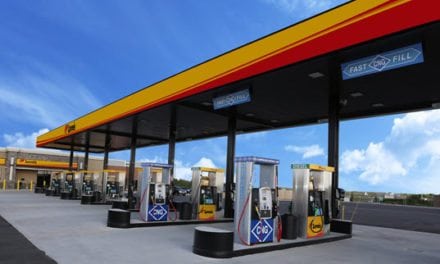Expanded Crack Spreads Threaten the Gasoline Rally
- Fewer days of supply of U.S. petroleum products seen as bullish
- Less ability to meet demand contrasts with high total inventories
- Impact of product exports grows on evaluation of supply
- Natural gas ends withdrawal season with more than 2 Tcf in storage
 Sincerely,
Alan Levine, Chairman of Powerhouse
Sincerely,
Alan Levine, Chairman of Powerhouse

The Matrix
As one of its services to clients, Powerhouse provides current information on the state of supply and demand for the major oil products and crude oil. This can be found on our website, www.PowerhouseTL.com. It is updated weekly, usually within five minutes of the Wednesday release of the Energy Information Administration’s (EIA’s) U.S. Petroleum Balance Sheet.
Behind the headlines of inventories, demand and refinery usage, however, are other data that can deepen our insight into the state of the oil market.
One of those is days-of-supply for each petroleum product. Days’ supply evaluates the amount of inventory for, say, gasoline available in terms of the number of days’ demand it could satisfy.
In recent months, much has been made of relatively high levels of product supply, following directly from the recovery of domestic crude oil production and refineries operating over 90% of capacity.

The charts show that total stocks of these products remain close to the five-year high. Nonetheless, demand for gasoline and ultra-low-sulfur diesel (ULSD) have drawn day’s supply toward the lower half of the five-year range. This is a bullish feature of a market that has been generally seen as soft.
In a note to Powerhouse clients, David Thompson evaluated the situation:
“We watch the days of supply chart very closely. It is a sensitive indicator representing the real-time decisions facing commercial buyers.
“Both products have shown very sharp drawdowns in days of supply. In particular, the drop in days’ supply of gasoline came from an extremely elevated level in January. A month of rain on the West Coast crimped demand during that time period, contributing to unusually high levels of days’ supply.
“These charts tell us that the recent rally has been genuine and not exclusively speculative buyers (though they may be part of it too). However, we are now in April and we would normally be talking about how the spring gasoline rally is now entering its later innings. Over a 30+ year time frame, gasoline futures tend to make a seasonal peak in mid-May (though it has been earlier in recent years).
“So yes, Powerhouse thinks the rally is ‘real,’ as many customers have been asking us. Refiners, however, are springing back into action to capture healthy crack spread margins, and we expect more wholesale supply to be coming to the market soon. The question we are wrestling with now is how much of that new supply will stay in our market versus being exported. If supply stays domestic, it should be enough to meet the increased seasonal demand. If gasoline exports continue to increase, then the rally could extend past its traditional seasonal time frame. We will keep you updated.”
Supply/Demand Balances
Supply/demand data in the United States for the week ending March 31, 2017, were released by the EIA.
Total commercial stocks of petroleum increased 1.0 million barrels during the week ending March 31, 2017.
Draws were reported in stocks of gasoline, distillates, residual fuel oil and propane. There were builds in stocks of fuel ethanol, K-jet fuel and other oils.
Commercial crude oil supplies in the United States increased to 535.5 million barrels, a build of 1.6 million barrels.
Crude oil supplies increased in three of the five PAD Districts. PAD District 1 (East Coast) crude oil stocks grew 0.3 million barrels, PADD 2 (Midwest) stocks expanded 0.3 million barrels and PADD 3 (Gulf Coast) stocks advanced 2.7 million barrels. PAD District 4 (Rockies) crude oil stocks fell 0.1 million barrels and PADD 5 (West Coast) stocks decreased 1.6 million barrels.
Cushing, Oklahoma, inventories increased 1.4 million barrels from the previous report week to 69.1 million barrels.
Domestic crude oil production increased 52,000 barrels daily to 9.199 million barrels per day.
Crude oil imports averaged 7.850 million barrels per day, a daily decrease of 374,000 barrels. Exports fell 435,000 barrels daily.
Refineries used 90.8% of capacity, an increase of 1.5 percentage points from the previous report week.
Crude oil inputs to refineries increased 203,000 barrels daily. There were 16.429 million barrels per day of crude oil run to facilities. Gross inputs, which include blending stocks, grew 283,000 barrels daily to 16.803 million barrels daily.
Total petroleum product inventories saw a decrease of 0.5 million barrels from the previous report week.
Gasoline stocks decreased 0.6 million barrels; total stocks are 239.1 million barrels.
Demand for gasoline fell 279,000 barrels per day to 9.245 million barrels daily.
Total product demand decreased 171,000 barrels daily to 19.703 million barrels per day.
Distillate fuel oil supply fell 0.5 million barrels to 152.4 million barrels. National distillate demand was reported at 4.098 million barrels per day during the report week. This was a weekly decrease of 124,000 barrels daily.
Propane stocks fell 1.2 million barrels to 41.6 million barrels. Current demand is estimated at 1.194 million barrels per day, an increase of 26,000 barrels daily from the previous report week.
Natural Gas
According to the EIA:
Warmer temperatures during the final storage week of the heating season result in small net injections into working gas storage. Net injections into storage totaled 2 Bcf, compared with the five-year (2012 – 2016) average net withdrawal of 13 Bcf and last year’s net injections of 6 Bcf during the same week.
Withdrawals from working gas totaled 150 Bcf during the previous storage week, as most of the Lower 48 states were significantly colder than normal. Working gas stocks total 2,051 Bcf, which is 265 Bcf more than the five-year average and 427 Bcf less than last year at this time.
Futures trading involves significant risk and is not suitable for everyone. Transactions in securities futures, commodity and index futures and options on future markets carry a high degree of risk. The amount of initial margin is small relative to the value of the futures contract, meaning that transactions are heavily “leveraged.” A relatively small market movement will have a proportionately larger impact on the funds you have deposited or will have to deposit—this may work against you as well as for you. You may sustain a total loss of initial margin funds and any additional funds deposited with the clearing firm to maintain your position. If the market moves against your position or margin levels are increased, you may be called upon to pay substantial additional funds on short notice to maintain your position. If you fail to comply with a request for additional funds within the time prescribed, your position may be liquidated at a loss and you will be liable for any resulting deficit. Past performance may not be indicative of future results. This is not an offer to invest in any investment program.
Powerhouse is a registered affiliate of Coquest, Inc.
Was this helpful? We’d like your feedback.
Please respond to [email protected].
Copyright © 2017 Powerhouse, All rights reserved.








